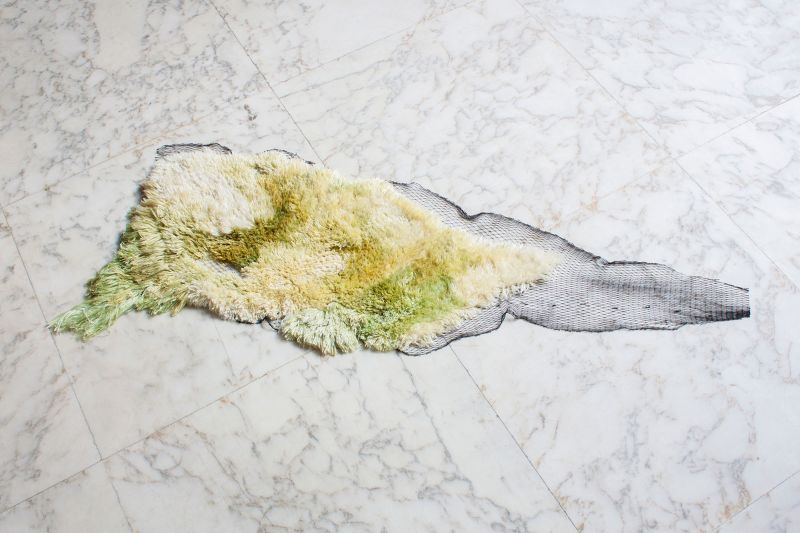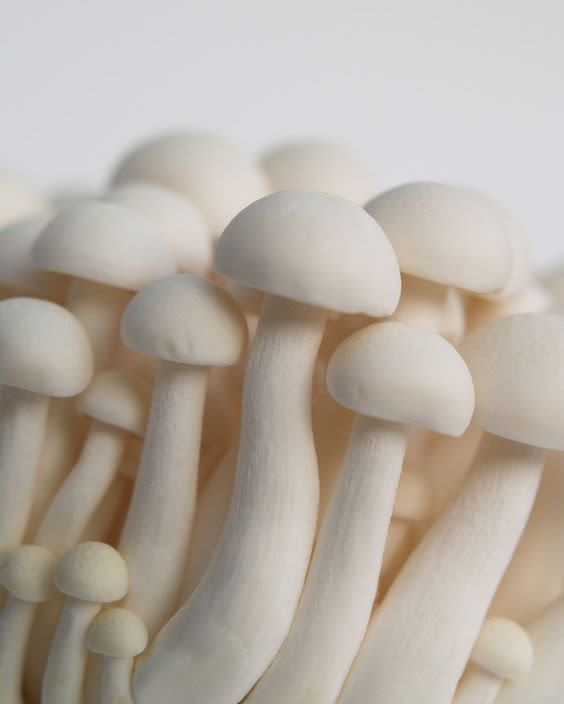
The Wondrous Potential of Mushrooms
The biggest organism on Earth resides in eastern Oregon. Covering 2,385 acres of land and averaging just one cell wall thick, a mycelium mat resides underneath a portion of the Malheur National Forest.
Date Posted
December 20, 2018
Mycelium is the dormant part of a fungus. If you think of a sprouting mushroom as the “fruit” of a plant, mycelium would be its roots. Unlike plants whose roots grow short, mycelium can grow for miles and miles and can be as thin as a single cell. These threads interlock to form dense meshes of plant matter. Scientists have known of the existence of mycelium networks for some time, but it wasn’t until the 1970’s that we began to discover just how sentient these networks are. Mycelium acts as the natural internet of their environment, sharing both information and nutrients between all life it touches. This natural network of soft fibrous thread-like roots can be found almost all over the world and is incredibly easy to grow at home. However, it’s only in the past decade engineers, scientists, and hobbyists have found ways to utilize this ancient material for new purposes.
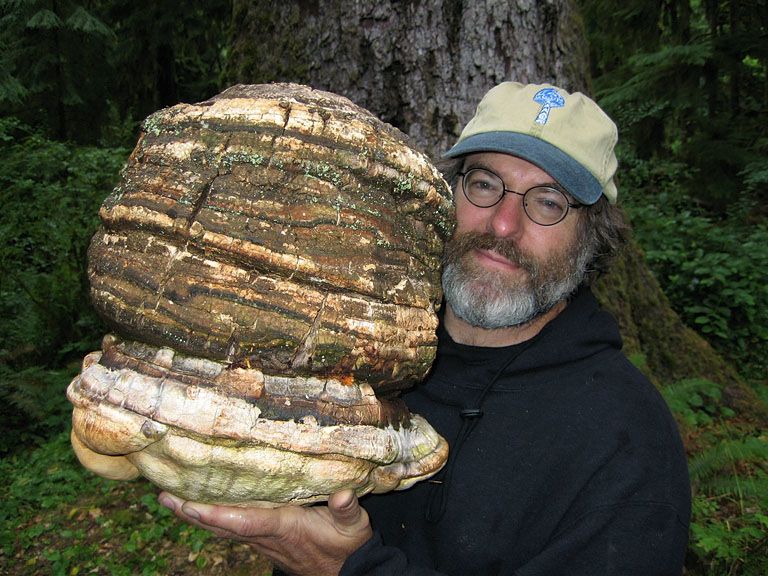
Paul Stamets
Many of these discoveries spring from the work of Paul Stamets. Stamets is a mycologist, scientist, researcher, and fungi evangelist who firmly believes that mushrooms can help save the world. That thought happens to be the subtitle for his 2005 book, Mycelium Running, in which Stamets details some of his discoveries and work that has led to his now 17 patents in ways to use mushrooms to solve problems ranging from termite infestations to oil spills. Even the EPA and DOD have worked with Stamets to find ways to clean up natural disasters and reduce the effects of bioterrorism, respectively. By breeding to produce specific traits to simply using funguses’ natural attributes in unexpected ways, Stamets and his peers found ways to clean up radiation, treat diseases, and remove airborne toxins. In the years since, a renewed public interest in mushrooms as food, medicine, and material has sparked a renaissance of innovative uses. With this newfound wave of attention, Stamets’ work, once seen as outlandish and weird, is beginning to find its way into the mainstream. As we find our world becoming more polluted and toxic, these eco-friendly proposals might be our best tactic to help begin the process of healing our planet.
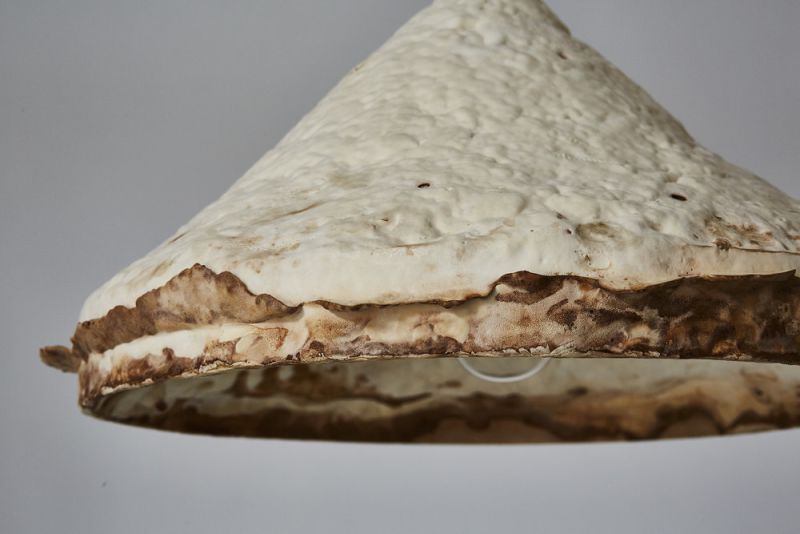
A lampshade constructed with mycelium by Sebastian Cox and Ninela Ivanova
One of the most common uses for mushroom-based materials, which you may have already come across is for alternative packaging. This promising replacement to styrofoam is created by growing mycelium into molds, and then slowly baking them to prevent mushroom growth. When this packaging is discarded, it quickly degrades and returns nutrients to the Earth (unlike styrofoam, which may take hundreds or thousands of years to break down completely.) As plastic collectively is being discouraged from use in all areas, other manufacturers are breeding dense mats of mycelium and compressing it, to form a hard shell to use in place of plastic packaging. Advancements are also being made in other toxic or harmful materials, like mycelium housing insulation which is both more flame resistant than standard insulation and able to provide an extra structural support.
It is this ability to provide structural support that has also gained the attention of designers and architects around the world. Various artists, studios, and groups have produced mycelium-based blocks and frames to support small buildings and structures. Others have molded mycelium chairs and lampshades, and some designers have started experimenting with 3D printing mycelium threads to create even more complex structures. Others are utilizing mycelium’s soft fabric-like nature to create dresses, shirts, jackets, and hats.
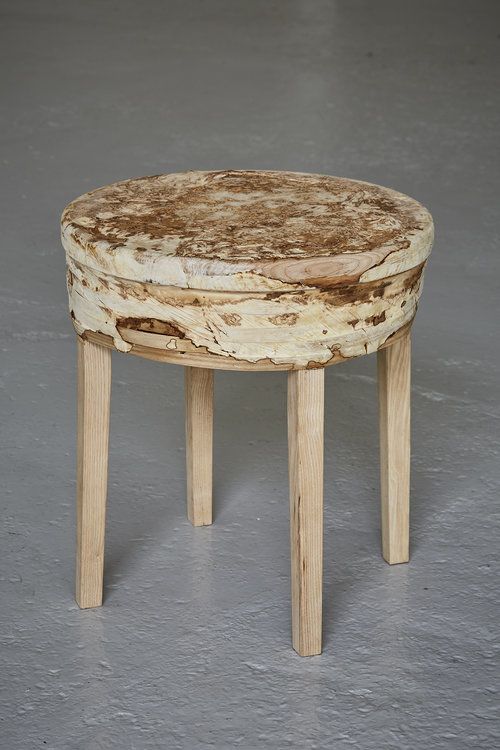
Stool created with mushroom mycelium by Sebastian Cox and Ninela Ivanova
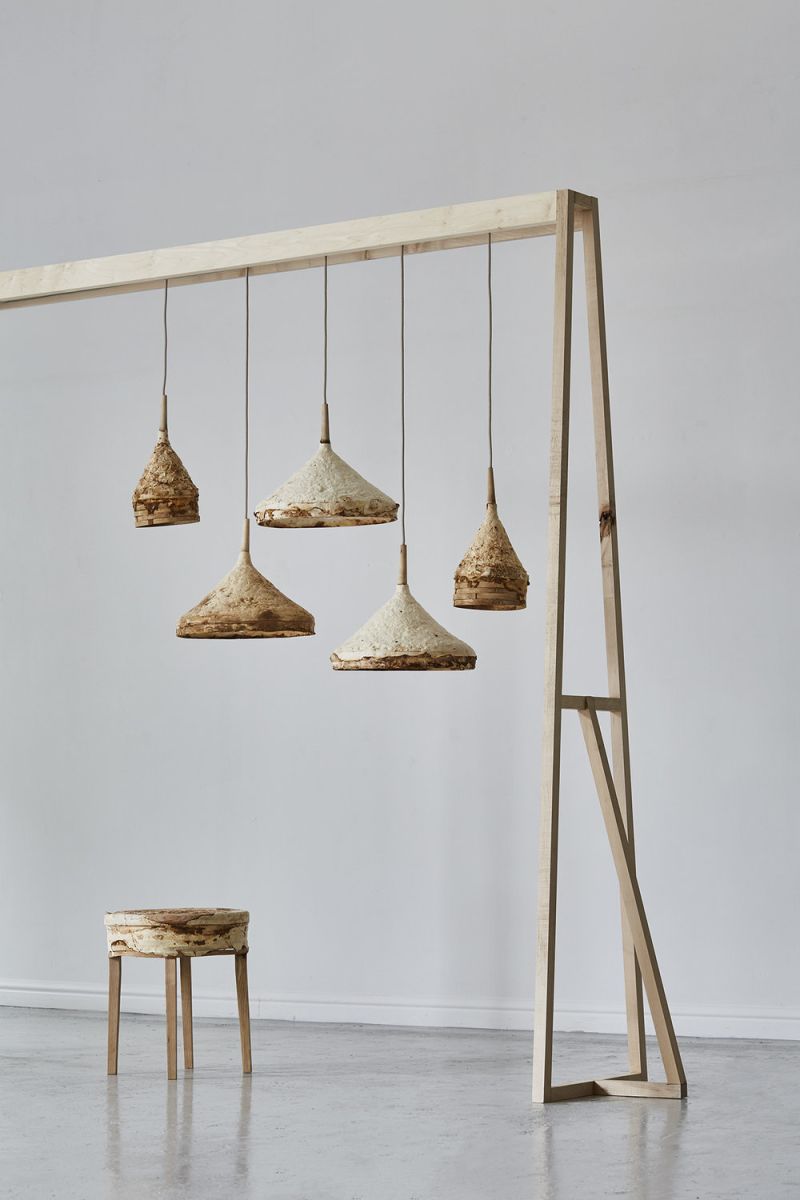
Mushroom mycelium used to create suede-like furniture by Sebastian Cox and Ninela Ivanova
You might be wondering at this point: if mycelium can be used for this many things, why isn’t it more widely adopted? According to Paul Stamets, people’s minds “immediately go to either portobellos or psychedelics” a symptom of what he calls “mycophobia.” Despite the evidence being there for the many possible uses of mushrooms and mycelium to solve problems, and create new materials and textiles, people tend to laugh off the idea because of how absurd it may sound at first. As climate change begins to wreak more havoc on our environment, we need to reassess their views of alternative materials. As more advancements are made, more and more scientists, designers, and architects are coming around to using mycelium products at scale. We’re hopeful that with time Paul Stamets will be proven right, and we’ll begin seeing more mushrooms everywhere, and in everything, as they save the world.

